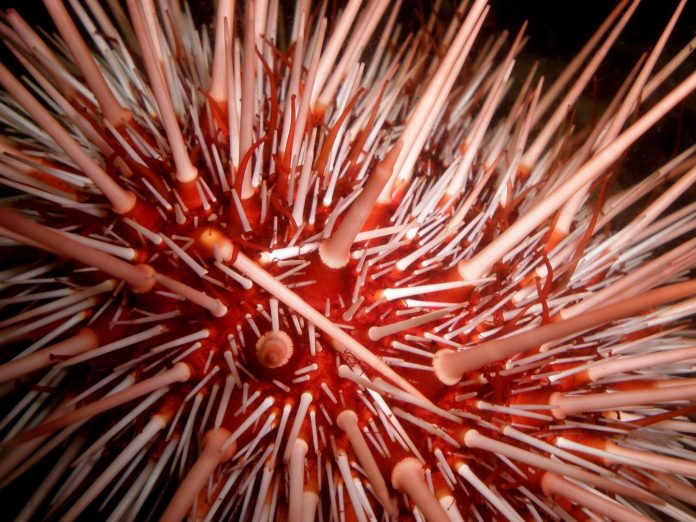Scientists of Far Eastern Federal University (FEFU), together with German and Russian colleagues, have developed a lead compound to fight chemotherapy-resistant prostate cancer. The original design comes out as scientists combine biologically active molecules from the chemically modified pigment of sea urchins with glucose molecules to deliver the active drug substance inward the tumor cells. A related article recently was published in Marine Drugs.
To cure prostate cancer scientists decided to capitalize on the Warburg effect, which turns as tumor cells inclination to eat lots of “sugar”, i.e. consume glucose compounds more intensively comparing to the majority of normal cells.
Researchers took active molecules analogous to the molecules isolated from sea urchins pigment and “sewed” on a sugar tail to them using Sulfur linker to tie up. The resulted compound was introduced to the cell culture of prostate cancer sustainable to Docetaxel, a standard chemotherapeutic drug. The outcome was cancer cells died more efficiently.
The scientific breakthrough comes out as the result of the close cooperation of teams from Russia and Germany that includes collaborators from FEFU School of Natural Sciences (Vladivostok Russia), University Medical Center Hamburg-Eppendorf (Germany), G.B. Elyakov Pacific Institute of Bioorganic Chemistry (PIBOC FEB RAS, Vladivostok, Russia), and University of Greifswald (Germany).
The Russian-German scientific paper was recognized as a best research article of the current issue of Marine Drugs.
“In our study, we benefit from the chance to combine the ideas and experience of specialists from different countries,” says one of the authors of the research, Dr. Sergey Dyshlovoy, senior researcher at the Laboratory of Biologically Active Compounds of FEFU School of Natural Science. “Firstly, we had at our disposal analogues of biologically active compounds from sea urchins which antitumor potential had been increased via chemical modification by Far Eastern colleagues from PIBOC FEB RAS. Secondly, we used the broad experience of German colleagues in the field of prostate cancer to establish and explain the mechanism that makes tumor cells more sensitive to glucose-related molecules. It turned out that prostate cancer cells have a large number of receptors responsible for the uptake of glucose and associated molecules into the cell.”
The scientist went on that although new drug compound effectively targets prostate cells culture there is a good prospect it might cure other types of cancer if the outcome of the first clinical trials is positive. The majority of tumor cells consume more glucose than healthy cells of the body.
The research outcomes not only in the new compound of sea urchins molecules tagged with glucose but also in the new way of conjugating them via Sulfur, instead of Oxygen, as it used to be early. The reason for the new method of molecules connection is a looking for the drug not breaking up by enzymes in the bloodstream before it hits a tumor target. Previous experiments confirm that compounds joined via Oxygen molecules are not as stable as needed.
Fall 2020, researchers plan to start the study possible side effects of the new drug, first on mice and then on other laboratory animals. Before this, the molecule of the drug compound will be further modified to assure its even greater stability in the bloodstream. The patent will secure the rights to a new generation molecule.
Considering the time spent on laboratory and subsequent clinical trials, as well as in case of these trials’ success, a new on-the-shelf drug should approach the market in the next 10 years.




